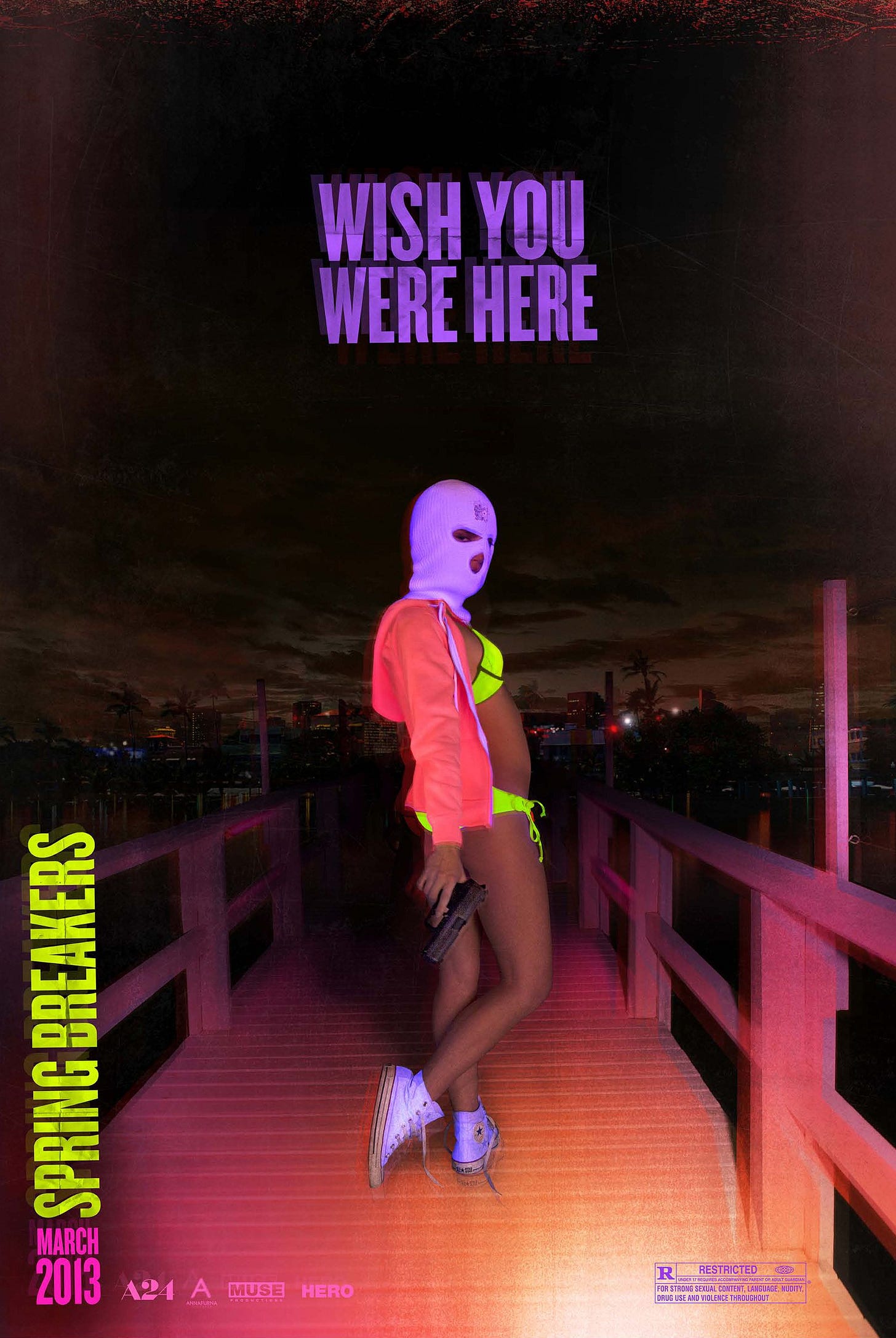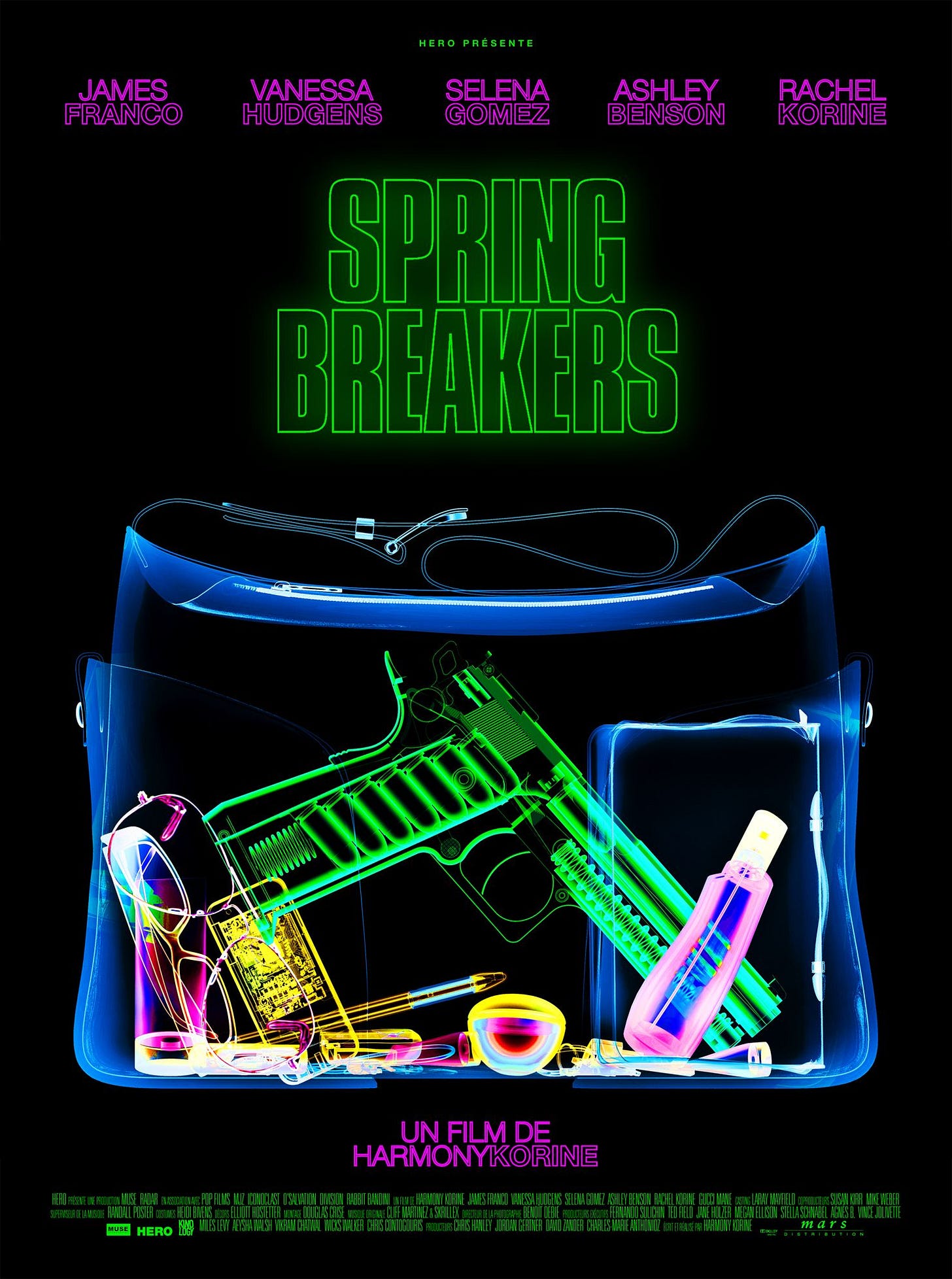I rarely enjoy writing, much less reading, someone declaring that a [film] is good and if you don’t like it, you’re wrong. You’re not wrong if you hate this film. There’s a lot to hate. But its flaws are so obvious, so wrongly executed at times that it swings right back around to genius.
Spring Breakers, for the last eight years, has been floating around streaming services, largely forgotten. Today, as it lands on Netflix, is the chance to elevate it to the genius it is, the pillar of postmodernism of the 21st century. When I first saw it in the theater, I left feeling tired, disoriented, and emotionally empty yet exhilarated. It is really easy to dismiss this as some sort of vapid, pseudo-moral panic of modern youth. And it very well is. Plus, the narrative is severely lacking, as if some scenes were cut. Its badness is what I love about it, it is a whole mess of ideas meant to disorient.
The best thing about it, however, is James Franco’s performance. He is a horrible person, and a character is a white man trying to act black. However, I have never seen a more actor in a perfect role for them. It’s satirical right on the edge of camp. He says he is living the “American Dream,” which, ironically, is the privilege for a white man to cosplay black culture. He maintains this character while trying to actually connect with the girls. I call them girls because none of them are extraordinary characters or actors. Their vapidness may be a calculated choice.
If I were to write several analyses of it, my thesis statements would be:
The moral depravity of women as empowerment. Is the film condemning the character4s for their choices or are the choices a consequence of their femininity and performative stage of a Spring Break?
The pointlessness of college- the scenes at the beginning of the film in the empty college campus and the large lectures are eerily similar to the disorienting banality of Spring Break partying
The search for a White Utopia. The main character, in a call to her grandmother, lauds everyone there (the other white partiers) as being so nice and welcoming. “This is where we are supposed to be” and “I want to freeze time” have become all too familiar rhetoric. She laments I wish we can stay here forever. This is where I belong. The white utopia is shattered when they encounter the permanent, non-tourists areas of St. Petersburg after being arrested and brought there by Franco. The discomfort of the eyes on black men on them. Selena is scared and the other two employ it to their benefit.
If nothing else, the scenes that are worth watching are:
The aesthetics and marketing artwork is perhaps its best-executed part.
The opening credits. I love type settings.
The tracking shot of the girls burglarizing the customers at the diner. They are only seen from outside in the getaway truck as she drives around, seeing the violence through the windows, and the triumph afterward. (For reference, the initial scene is at 14:30.)
James Franco’s infamous speech. He is an interesting specimen of masculinity, trying to assert himself with his material goods, but he is ultimately a feminized character, serving as a parental figure for the girls, and in an almost too obvious scene, enjoying giving fellatio to a gun, which the girls use as a phallus. (Monologue at 53:00).
There’s also the consideration of the meta-meanings of the film. Former teen stars shed their image and transform into the commodity they always were, but this time in a bizarro world.
The soundtrack is great.
What is this? A semi-regular newsletter about culture and academia and academic culture with occasional creative essays.




